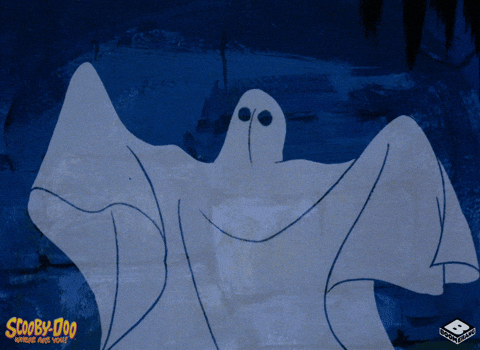Why do kids like spooky things?
Plus, the curious phenomenon of “Nobelitis”
BRAIN WAVES
Boo! Kids love a good scare...as long as it’s fun. A new study found that the vast majority of children (93%) enjoy what researchers called “recreational fear.” That is, engaging in scary-but-fun activities like roller coaster rides or watching spooky movies. The researchers interviewed 1,600 parents about their kids’ experiences with different types of fear-based play and found that not only is this type of play quite common, but it’s also very social. In other words, the scary-but-fun activity— whether it’s a haunted house, a horror movie, or an extreme sport— is usually enjoyed with another person. The researchers think “social contexts may provide a relatively secure context within which to explore recreational fear.” They also hypothesized that recreational fear might also help kids strengthen their friendships with others and build emotional resilience, “including the prevention of both phobias and problematic anxiety.” . So go ahead, get spooky.
The genius trap. Even geniuses have questionable ideas. “Nobelitis” is the nickname for a curious phenomenon where some Nobel Prize winners, after reaching the pinnacle of scientific achievement, begin endorsing fringe theories or scientifically unsound ideas often outside their field. A famous example of this: Linus Pauling. He won two Nobel Prizes: one for chemistry in 1954 and another for peace in 1962. Later, he advocated high-dose vitamin C as a cure-all for everything from the common cold to cancer, despite evidence to the contrary. Scientists ascribe “Nobelitis” to a combo of inflated confidence and the halo effect — the idea that being brilliant in one area translates to other areas. . As Nobel-winning biologist Paul Nurse wrote in an op-ed, “The Nobel Prize is a tremendous honour and a reflection on the exceptional work done by the recipients, but it doesn’t confer ‘general expert’ status...Don’t expect that of us, and fellow laureates don’t begin to believe it or you will be in danger of succumbing to Nobelitis.” Even the brightest minds benefit from a little humility.
On purpose. Having a sense of purpose can be a buffer against the challenges we all face at various stages of life. Purpose can also boost our health and longevity. But maybe purpose isn’t something to be found — maybe it’s something we can develop from within. Listen to learn more.
ON THE HIDDEN BRAIN PODCAST
Reframing the Battle of Wills: It can be frustrating when people do things we don’t want them to do. A friend cancels plans at the last minute. A child refuses to get dressed for school. Before long, our resentment builds, and we’re tempted to issue more rules, reminders, and consequences. But the techniques we use to get people to alter their behavior are often strikingly ineffective. This week, psychologist Stuart Ablon explains why these methods fail, and offers better ways to help the people we care about make lasting change.
ON THE MY UNSUNG HERO PODCAST
Kate Elsley’s Story: In 2008, Prop 8 passed in California, leaving Kate feeling unwelcome in her own state. Then one stranger’s quiet courage on a train platform reminded her she wasn’t alone.
Don’t forget to send us the story of your unsung hero! Record a voice memo on your phone and email it to myunsunghero@hiddenbrain.org.
NEW STOPS COMING ON OUR LIVE TOUR
Don’t miss Monday’s podcast, where we’ll be announcing several new 2026 stops on the Hidden Brain tour! Shankar will share a pre-sale code that our listeners can use to get tickets before they’re available to the general public.
And if you’re in the Los Angeles area, you can get tickets right now to our November 22 show. Join Shankar for an evening of science, storytelling, and connection. Hope to see you there!
MIND GAMES
A man went to a party and drank some punch. He left early. Everyone else at the party who drank the same punch were poisoned and became very sick. Why didn’t the man get sick?
LAST WEEK’S PUZZLE
Four cars come to a four-way stop, each coming from a different direction. They can’t decide who got there first, so they all go forward at the same time. All four cars go, but none crash into each other. How is this possible?
The answer: They all made right-hand turns
A MOMENT OF JOY SPOOKINESS!
Make your own creepy Halloween sounds
This weekly newsletter is made possible in part by Loom by Atlassian. Unstuck your process, projects, and teams with video communication from Loom. Try Loom today at loom.com.
Have an idea for Hidden Brain? A story you want to share with us? Send an email to ideas@hiddenbrain.org. Listen to us on Spotify, Apple, Amazon Music or your favorite podcast platform.




